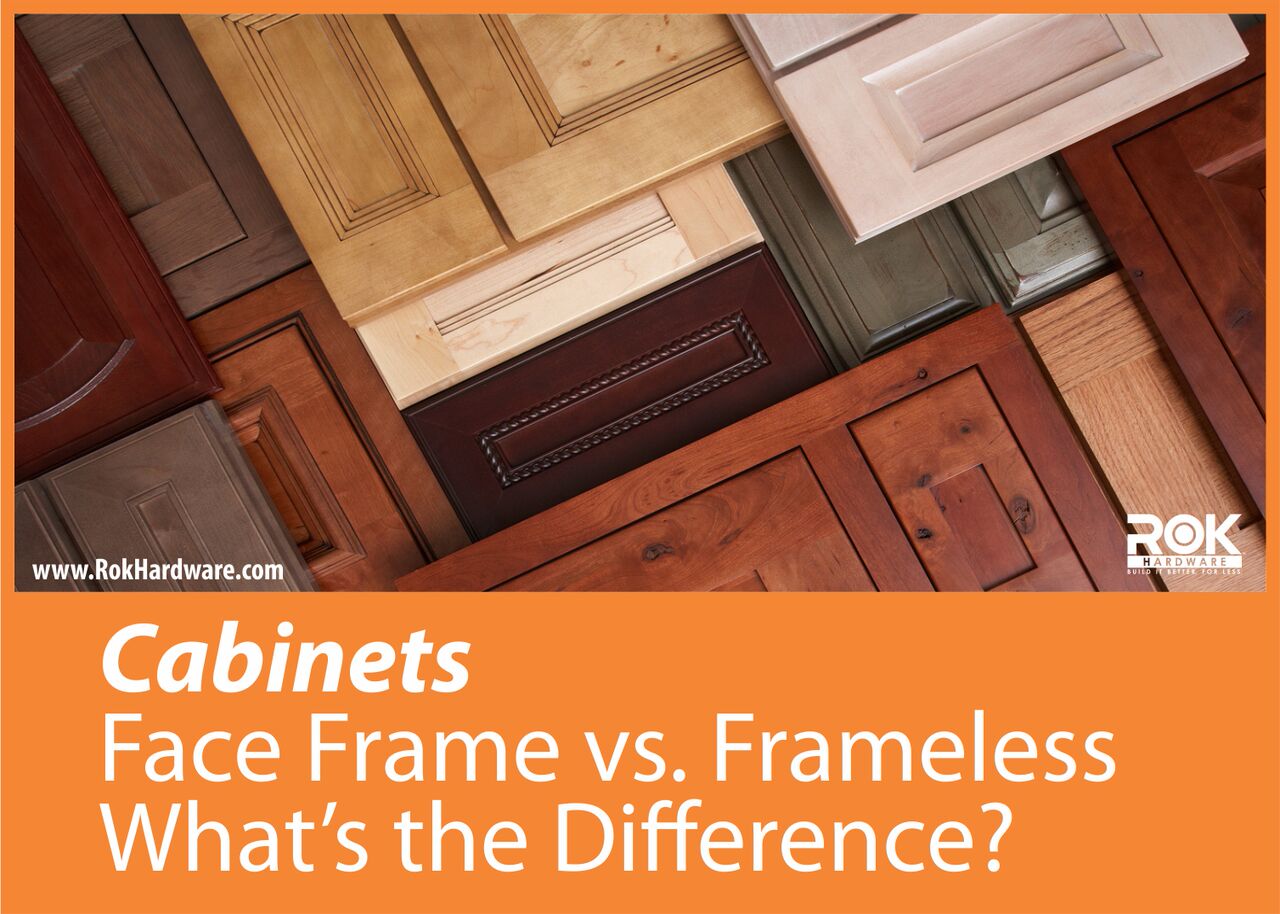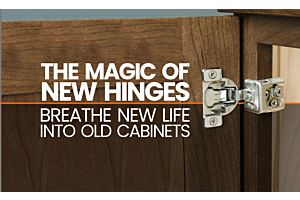
When picking your cabinets, you’ll have the option between framed cabinets or frameless ones. But what’s the difference? And is one better than the other? So many options and things to think about! This post will give you the basics so you can make an educated decision about which kind of cabinet is best for you and the area you’ll be installing them in.
The illustration above is a simple visual and gives the basic difference in the two cabinet types—at least regarding ascetics. A face frame (or framed) cabinet has a frame around the front of the cabinet box (hence the name), whereas a frameless cabinet does not. Some people consider a face frame cabinet more decorative, but honestly, it’s just a style choice. Also, some framed cabinets are sturdier because the frames helps to keep the box construction together.
Below is a Venn diagram with the aspects of both types of cabinets. But don’t make your decision based on which circle has more items. Make sure you look at the actual items and decide which aspects are most important to you.

After using the Venn diagram, if you’re still feeling confused, then continue reading and we'll talk about a few of these aspects in detail.
Names:
As you shop for cabinets and talk to professionals, remember that these two types of cabinets often go by other names. Sometimes face frame cabinets are called framed, traditional, or American style. And frameless cabinets are often called full access, modern, European style, or Euro. It can be confusing, so keep this in mind while shopping.
Hinges:
With face frame cabinets, the door hinges attach to the frame. And with frameless cabinets, the hinges attach to the actual box. With both types of cabinets, you can use regular hinges or concealed hinges. So this aspect really shouldn’t be a deciding factor for you. But, another thing to consider regarding the hinges is that you cannot adjust the hinges on a face frame cabinet, whereas you often can on a frameless one. Over time, hinges sometimes loosen and being able to adjust and tighten them can be a nice factor.
Doors:
Face frame cabinets can accommodate any type of cabinet door (standard overlay, full overlay, and inset) whereas frameless cabinets can only accommodate full overlay doors.
Opening:
Even if the actual cabinet box is the exact same size on a face frame and a frameless cabinet, the frameless one will have a bigger opening. For most people, this doesn’t make a huge difference since the actual inside storage space is the same, but depending on what you’ll be putting in the cabinet, it may be a deal breaker. Also, on cabinet boxes that have two doors (under a sink, for example), then a frameless cabinet will not have a stile going down the middle of the box (which also limits entrance, but does not change the storage space inside). See the illustration below.

When it comes down to it, there are pros and cons to both types of cabinets. Figure out what you want in a cabinet, talk to professionals who are willing to help, and go with the one that best fits your needs.






